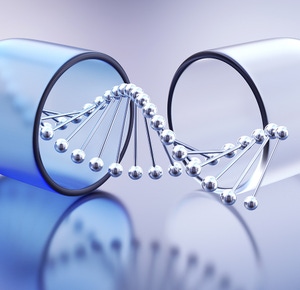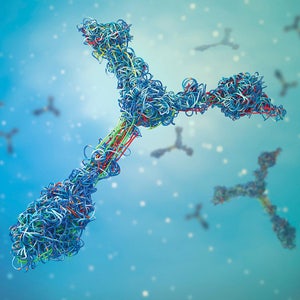

HTRF AAV6 Detection Kit, 10,000 Assay Points
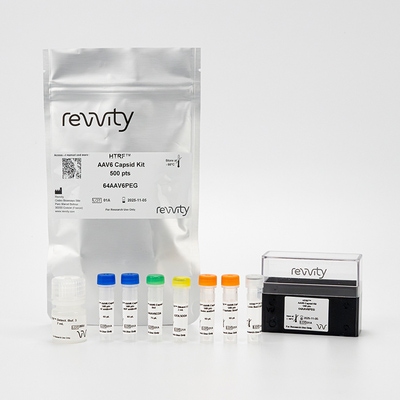

HTRF AAV6 Detection Kit, 10,000 Assay Points
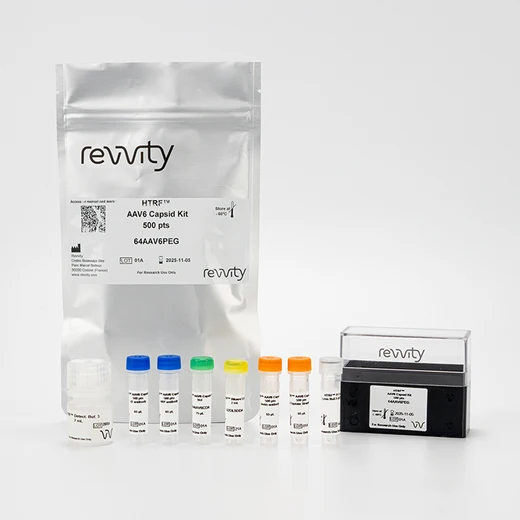


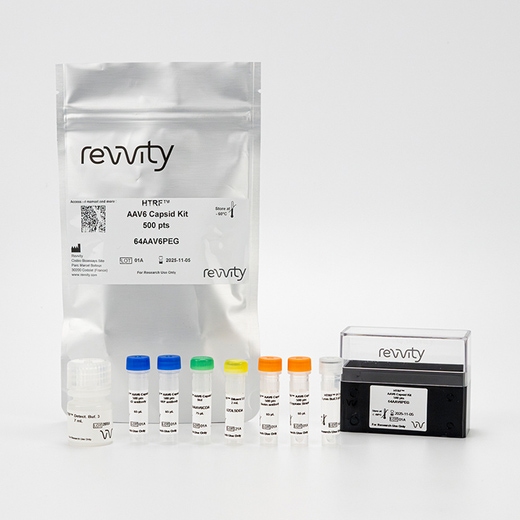


The AAV6 Capsid kit is designed for the quantitative measurement of Adeno-associated virus serotype 6 (AAV6) particles in both cell lysates and cell supernatants.
| Feature | Specification |
|---|---|
| Application | Bioprocessing |
| Sample Volume | 5 µL |
The AAV6 Capsid kit is designed for the quantitative measurement of Adeno-associated virus serotype 6 (AAV6) particles in both cell lysates and cell supernatants.



HTRF AAV6 Detection Kit, 10,000 Assay Points



HTRF AAV6 Detection Kit, 10,000 Assay Points



Product information
Overview
Adeno-associated virus (AA) vectors are the leading platform for gene delivery for the treatment of a variety of human diseases. AAV Serotype 6 (AAV6) is an efficient vector for gene delivery to skeletal muscle or lung tissue. The AAV6 Capsid kit is designed for the quantitative measurement of Adeno-associated virus serotype 6 (AAV6) particles in both cell lysates and cell supernatants.
Specifications
| Application |
Bioprocessing
|
|---|---|
| Brand |
HTRF
|
| Detection Modality |
HTRF
|
| Lysis Buffer Compatibility |
Lysis Buffer 1
Lysis Buffer 2
Lysis Buffer 3
Lysis Buffer 4
|
| Product Group |
Kit
|
| Sample Volume |
5 µL
|
| Shipping Conditions |
Shipped in Dry Ice
|
| Target Class |
Viral Particles
|
| Technology |
TR-FRET
|
| Unit Size |
10,000 assay points
|
Video gallery

HTRF AAV6 Detection Kit, 10,000 Assay Points

HTRF AAV6 Detection Kit, 10,000 Assay Points

How it works
AAV6 Capsid assay principle
The Adeno-Associated Virus serotype 6 (AAV6) assay measures AAV6 Capsid in cell supernatant or cell lysate. The assay uses two anti-AAV6 antibodies: one coupled to HRP, that binds to anti-HRP d2 (the acceptor) in premix 1, and the other coupled to biotin, that binds to Streptavidin Eu-cryptate (the donor) in premix 2. In presence of AAV6 Capsid in a cell extract or supernatant, the addition of these conjugates brings the donor fluorophore into close proximity with the acceptor, and thereby generates a FRET signal. Its intensity is directly proportional to the concentration of the capsid present in the sample and provides a means of assessing any changes caused by experimental variability under a no-wash assay format.

AAV6 Capsid assay protocol
The AAV6 Capsid assay protocol using a 384-well small volume white plate is described on the right. 5 µL of sample or standard and 5 µL of diluent are dispensed directly into the plate for detection by HTRF® reagents. The Biotin anti-AAV6 antibody is pre-mixed with Streptavidin labeled with the donor, and HRP anti-AAV6 is pre-mixed with anti-HRP labeled with the acceptor. 5 µL of each premix are added. The assay can be run in up to a 1536-well format by simply resizing each addition volume proportionally.

Assay details
AAV6 Capsid assay specifications
| Sample size | 5 µL |
|---|---|
| Final assay volume | 20 µL |
| Time to results | Overnight at RT |
| Detection limit (LOD) in diluent | 1.42E+08 VP/mL |
| Dynamic Range | 2.47E+09 – 5.00E+11 VP/mL |
| Sample compatibility |
From raw harvest material to the final product Supernatant, Cell Lysate (LB#3) |

Analytical performance
Precision
Intra-assay
| Sample | Mean [AAV6] (VP/mL) | CV |
|---|---|---|
| 1 | 2.00E+11 | 10% |
| 2 | 5.00E+10 | 7% |
| 3 | 1.25E+10 | 3% |
| Mean CV | 7% |
Inter-assay
| Sample | Mean [AAV5] (VP/mL) | CV |
|---|---|---|
| 1 | 2.00E+11 | 7% |
| 2 | 3.20E+10 | 8% |
| 3 | 1.28E+10 | 11% |
| Mean CV | 9% |
Each of the samples was measured in 3 independent experiments performed by different operators, and % CV was calculated for each sample.
Dilutional linearity
|
Dilution Factor |
[AAV6] Expected (VP/mL) |
[AAV6] Mesured (VP/mL) |
Dilution Recovery |
|---|---|---|---|
|
Neat |
- |
3.87E+11 |
100% |
|
2 |
1.93E+11 |
2.03E+11 |
105% |
|
4 |
9.67E+11 |
1.05E+11 |
108% |
|
8 |
4.84E+10 |
5.49E+10 |
113% |
|
Mean |
|
|
107% |
Interferences
|
[AAV6] (VP/mL) |
[Total Protein] SF9 cell lysates Spiked Sample (mg/mL) |
Recovery |
|---|---|---|
|
1.0E+11 |
0.5 |
61% |
|
0.375 |
61% |
|
|
0.25 |
65% |
|
|
0.125 |
64% |
|
|
0.05 |
100% |
|
[AAV6] (VP/mL) |
[Total Protein] HEK293 cell lysates Spiked Sample (mg/mL) |
Recovery |
|---|---|---|
|
1.0E+11 |
1.5 |
96% |
|
0.75 |
100% |
|
|
0.5 |
104% |
|
|
0.375 |
106% |
|
|
0.25 |
104% |
Antigen Spike and Recovery
|
Sample |
[AAV6] Standard (VP/mL) |
SF9 cell lysate (0.05 mg/ml) |
|---|---|---|
|
Recovery |
||
|
1 |
1.00E+11 |
91% |
|
2 |
5.00E+10 |
103% |
|
3 |
1.00E+10 |
100% |
|
|
Mean CV |
98% |
|
Sample |
[AAV6] Standard (VP/mL) |
HEK293 cell lysate (1.5 mg/ml) |
|---|---|---|
|
Recovery |
||
|
1 |
1.00E+11 |
100% |
|
2 |
5.00E+10 |
93% |
|
3 |
5.00E+09 |
91% |
|
|
Mean CV |
95% |
Cross reactivities
Cross reactivities were assessed using other serotypes from the AAVs family. Standard curves were generated for each serotype using AAVs capsids diluted in the kit diluent.
5 µL of capsids were transferred into a white detection plate (384 low volume), and 5 µL of diluent followed by 10 µL of the HTRF AAV6 capsid detection reagents were added. The HTRF signal was recorded after an overnight incubation at room temperature.
The assay shows differential affinities depending on the serotype, but does not detect AAV8 and AAV9.

Assay validation
Validation of HTRF AAV6 capsid detection on full and empty AAV6 particles
To demonstrate the detection of both full and empty AAV6 capsids, recognition of full AAV1-CMV-eGFP and empty AAV6 capsids was analyzed in the assay. A large range of AAV6-CMV-eGFP concentrations (GC/mL) was converted into VP/mL using an independent sample quantitation assay. 5 µL of full or empty capsids diluted in the kit diluent were then transferred into a white detection plate (384 low volume), and 5 µL of diluent followed by 10 µL of the HTRF AAV6 capsid detection reagents were added. The HTRF signal was recorded after an overnight incubation at room temperature. As expected, the HTRF AAV6 capsid detection assay could detect both full and empty AAV6 capsids in the same way.

Resources
Are you looking for resources, click on the resource type to explore further.
When a genetic mutation occurs, it can lead to the development of different pathologies. Over the past 10 years exciting...
SDS, COAs, Manuals and more
Are you looking for technical documents related to the product? We have categorized them in dedicated sections below. Explore now.
- LanguageEnglishCountryUnited States
- LanguageFrenchCountryFrance
- LanguageGermanCountryGermany
- Resource TypeManualLanguageEnglishCountry-


How can we help you?
We are here to answer your questions.






